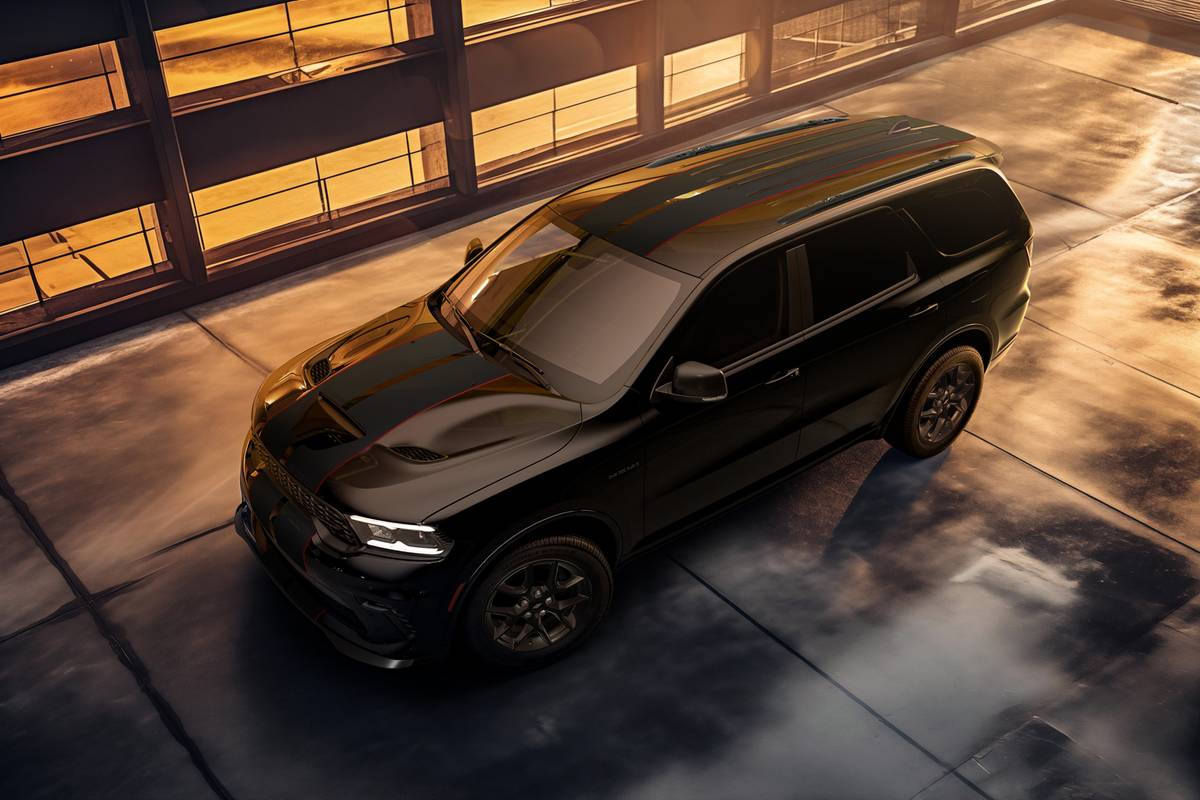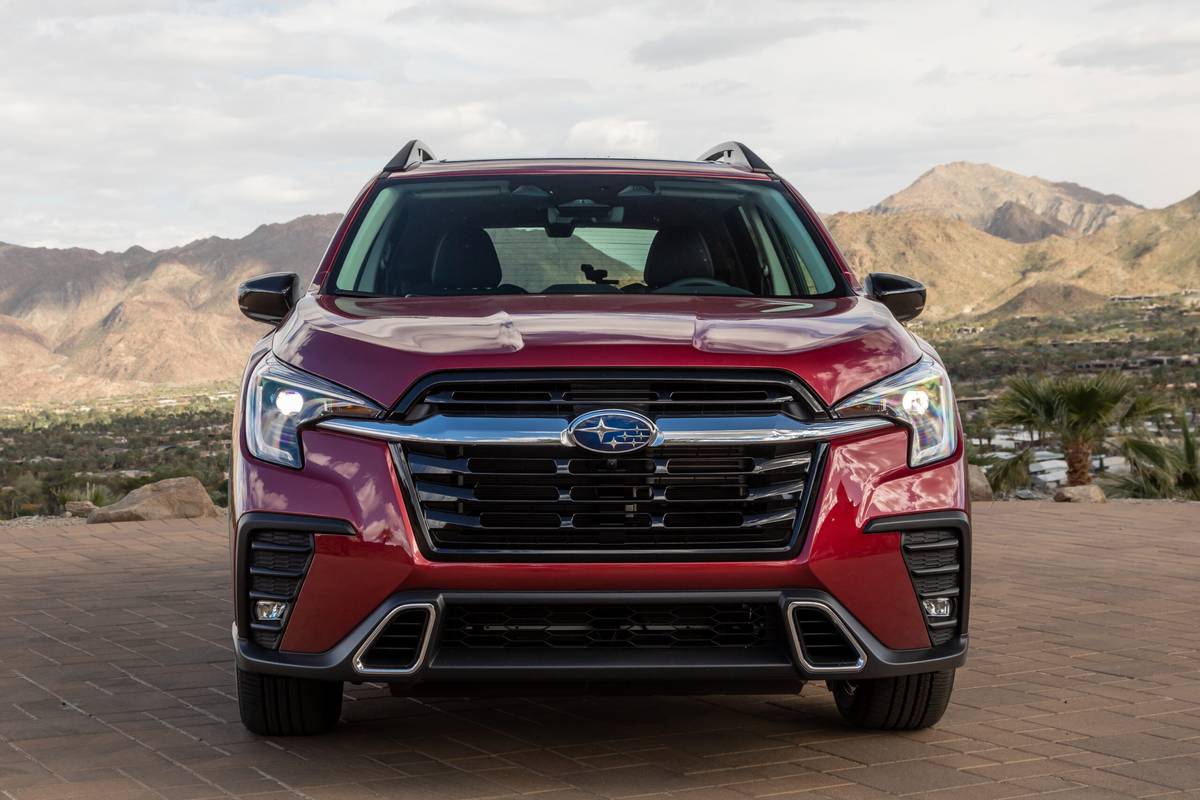chicagotribune.com's view
Simply put, Hyundai goofed.
That`s the message from Rod Hayden, executive vice president of Hyundai Motor America, the company that distributes the South Korean car line in the U.S.
Hayden is blessed with hindsight, because when Hyundai was suffering its fall from consumer graces, he was vice president and general manager of Mazda Motors of America, the Miata, MPV and 929 sedan folks, who were wearing white hats at the time.
After a brief retirement from Mazda and a major executive housecleaning at Hyundai, Hayden gave up coupon clipping and joined Hyundai in January.
In the 1987 model year, Hyundai`s first in the U.S. market, the new kid on the block took the industry by storm, with sales of 261,392 subcompact Excels. It placed No. 7 among the nation`s top-selling cars. In 1988, sales rose to 267,099 units, and Hyundai rose to the No. 6 spot. In 1989, sales turned south, finishing at 112,967. Hyundai fell off the sales charts.
Hayden said Hyundai messed up on several fronts, some not of its own doing.
“The message when the car first went on sale was that the Hyundai was a low-priced, $5,000 car,“ he said in an interview. “That was the right way to go to establish a beachhead. But after one year, the company should have changed from just promoting a `cheap car` to promoting one with value for the money. Low price had become its only attribute.
“It rode the pony too long, and the message of being `cheap` denoted lack of quality. I remember when I was at Mazda, and I looked at their (Hyundai`s) `cheap` strategy and said to myself, `This company is going to self-destruct.` Now it`s my job to bring it back.“
Hayden said the automaker also was a victim of the times. There was and still is a great deal of over capacity in the industry. The Big Three domestic automakers began offering cut-rate financing programs, 60-month loans and first-time buyer discounts to help clear bulging inventories of midsize, full- size and luxury cars.
“As a result, the small-car market got hurt, and that`s where Hyundai was,“ Hayden said. “Everyone else had cars in other sizes to fall back on when subcompacts didn`t sell. We didn`t. Subcompact was the only segment we were in.
“We now have the midsize Sonata, but we didn`t have the car back then- another example of bad timing for Hyundai. The Sonata was supposed to be introduced in the fall of 1987, in conjunction with the Olympics in Seoul. What happens? The South Korean workers go on strike, and on top of that there are student demonstrations. No product.“
There were other problems, of course, such as Excel being introduced with a carbureted 4-cylinder engine, a system relegated to the dark ages by fuel injection.
Then, too, in Excel`s heyday, when crowds flocked to showrooms to find an “under $5,000“ car, shoppers were confronted with vehicles stickered at $8,000 to $10,000 by dealers who loaded the cars for profit.
“A lot of dealers ripped the heads off consumers and stuffed them back down their throats with that pricing,“ Hayden said. “And by stretching the loans over 60 months (to reduce the monthly payment), a lot of people who really couldn`t afford the car were put into one. The dealers weren`t entirely pure in this whole thing.“
What Hyundai also found was that dealers eager to make a profit when sales topped 260,000 units annually jumped ship when sales tumbled to the 100,000 level.
“There were a lot of mega dealers who had a portfolio of stores who dropped the franchise as easily as they picked it up,“ Hayden said.
So what`s the former Mazda executive going to do?
“We have to get a new message out, one of high content and high quality, with value for the money,“ he said.
Hyundai also has to expand its product line to attract new buyers and prevent those sudden and sharp downturns ifo ne segment turns weak.
“I`m going to South Korea this month to look at new models,“ Hayden said. “We want to add more product, though nothing along the lines of a Lexus, of course.
“The Scoupe (pronounced scoop) sport coupe, introduced at the Chicago Auto Show, goes into production in May for sale in July as a 1991,“ he said. “Our lowest-priced Excel starts at $5,899, the Sonata at $9,999, and the Scoupe will be in the $7,995 to $8,495 range.“
The front-wheel-drive Scoupe will offer the same fuel-injected, 1.5-liter 4-cylinder as Excel.
Another car planned is the J-sedan, which will be larger than Excel but smaller than Sonata. It`s scheduled to arrive for the 1992 model year.
Hayden said Hyundai also is looking at Chrysler Corp. as a product source. Hyundai will supply Chrysler with a version of the Sonata for the 1992 model year, to be marketed under the Eagle brand.
“That could be a two-way street for us, and we could get something in return from Chrysler,“ Hayden said, without stating just what Chrysler model he`d like to have wear a Hyundai nameplate.
Chrysler Vice Chairman Gerald Greenwald won`t elaborate on whether his company will be a source for a new Hyundai.
“We`ve been exploring our next project with them,“ he said. “If there`s a Chrysler product sold with the Hyundai name on it, it will be one that`s different from our own products.“
That`s the future. Back to the present. We test-drove the front-wheel- drive 1990 Excel, with its new styling and fuel-injected engine, and the front-wheel-drive 1990 Sonata, which adds a V-6 engine for the new model year. Fuel injection makes a significant difference in the 1.5 liter 4- cylinder. We last drove Excel when carburetion was the order of the day. At best it was sluggish. Injection is a big plus.
The fuel-injected 1.5 delivers 81 horsepower. Not exactly a speed merchant, but it`s a noticeable improvement over the 68 horsepower from the carbureted version. The 1.5 is teamed with a smooth-shifting5-speed manual. The EPA rating is a respectable 29 m.p.g. city, 36 highway.
Excel is one of those cars that get you from point A to point B at a relatively low cost, with out a lot of frills. After price, mileage is the strong suit.
Our annoyance with Excel came from handling. The 2,100 pounder seemed wobbly on the highway, and the suspension appeared to have a mind of its own. The 13-inch all-season tires didn`t contribute to a feeling of secure road grip.
Excel is built on a 93.9-inch wheelbase and is 161.4 inches long. Despite the small dimensions, interior room was good. Seats were comfortable and offered good support, even if the suspension system didn`t.
Power brakes, body-side moldings, digital clock, full wheel covers, tinted glass, dual remote mirrors, tinted glass, rear-window defroster and trip odometer are standard. Power steering runs $260 extra, AM-FM stereo $260 and floor mats $54. Base price is $6,999, and with options the GS hatchback test car sticker read $7,608.
Sonata is built on a 104.3-inch wheelbase and is 184.3 inches long, slightly smaller than a Taurus.
Sonata previously offered only a 110-horsepower, 2.4-liter 4-cylinder engine. For 1990, a 3-liter, 142-horsepower V-6 teamed with 4-speed automatic is available in base and GLS sedans. The V-6 provides a healthy power boost. The 4-speed automatic features dual-mode power and normal settings, for a choice of optimum performance or mileage.
Sonata is exceptionally roomy, ride and handling are decent and the equipment list is more than adequate. Excel gets you from A to B without consuming a lot of gas or too big a chunk of wallet or purse. Sonata gets you there with more style, though not what you`d consider lots of glitz or glitter.
Powerbrakes and steering; digital clock, tachometer and trip odometer; fron t-door map pockets and cloth seats; remote hood, trunk and fuel-filler door release; tilt steering; tinted glass; full wheel covers; intermittent wipers; cruise control; 6-way adjustable driver`s seat; fold-down rear seatbacks; AM-FM stereo with cassette; power windows, door locks and mirrors; and illuminated vanity mirror are standard.
Base price of the GLS 4-door we drove is $13,739. Our test car added air conditioning at $780, radio upgrade for $115 and floor mats at $60.
Excel and Sonata are pleasant enough vehicles, but while Hayden can boast of value and quality, Hyundai still doesn`t have a sufficient track record to determine long-term reliability, durability or dependability. South Korea is still as much of a question mark on autos in the `90s as Japan was in the early `70s.
>> 1990 Hyundai Excel Wheelbase: 93.9 inches Length: 161.4 inches Engine: 1.5 liter, 16 valve, 81 h.p., four cylinder Transmission: 5-speed manual Fuel economy: 29/36 m.p.g. Baseprice: $6,999 Strong point: Fuel injected engine Weak point: Wobbly handling
1990 Hyundai Sonata GLS Wheelbase: 104.3 inches Length: 184.3 inches Engine: 3 liter, 142 h.p. V-6 Transmission: 4-speed automatic Fuel economy: 18/24 m.p.g. Base price: $13,739 Strong point: Addition of V-6 Weak point: Nothing out of the ordinary >>
Latest news



